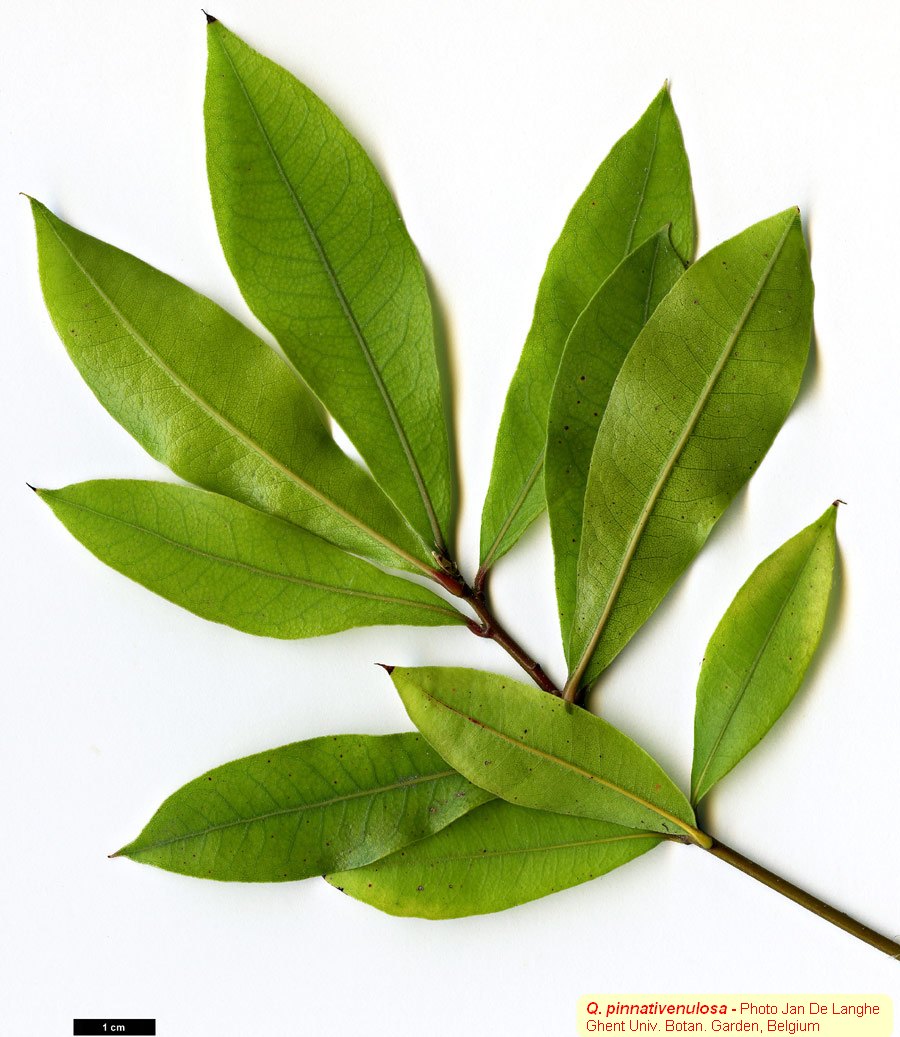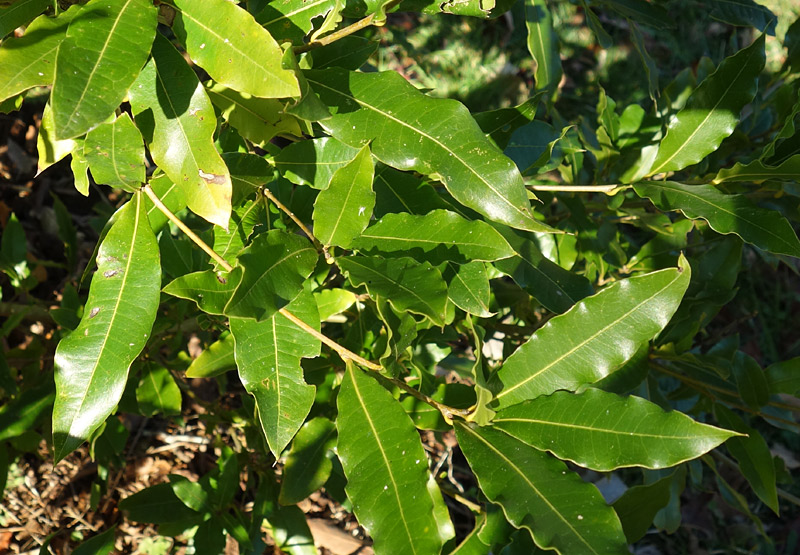| Quercus pinnativenulosa | |
| Author |
C.H.Muller 1936 J. Arnold Arbor. 17: 171 Diagnosis here |
| Synonyms | |
| Local names | |
| Range | Mexico, endemic
to the Sierra Madre Oriental (Hidalgo, Nuevo Leon, Oaxaca, Querétaro,
San Luis Potosi, Tamaulipas and Veracruz); 800-1900 m; |
| Growth habit | 7-20 m tall, trunk to 0.5 m in diameter; |
| Leaves | 6-13 x 1.8-3
cm; more or less leathery; lanceolate to elliptic-lanceolate; apex acuminate
with long bristle-tip, often in a spiral; base acute, seldom rounded;
margin entire, sometimes slightly undulate and even remotely rolled under
(old trees); yellowish green, lustrous, hairless above; hairless beneath;
somewhat concolor; 8-18 vein pairs, angled more than 45° with the
midvein , flat or impressed above but not conspicuously, flat or weakly
raised below; epidermis smooth, slightly papillose ; petiole 5-17 mm long,
glabrous; |
| Flowers | in March-April;
male catkins 6-9 cm long, with some unicellular hairs, lax; |
| Fruits | acorn 1-1.8
cm long, 1 cm wide; solitary or paired on a 5-8 mm long stalk; nut enclosed
1/3 by cup; cup half-round with straith margin, 0,7-0,9 cm wide, with
triangular, pubescent scales; maturing in 2 years from August to October;
|
|
Bark, twigs and |
twig 1.4-3 mm in diameter, hairless, greyish, silky, slightly sulcate, with inconspicuous, yellowish lenticels; buds narrowly conical or ovoid, 3-4.5 mm long x 1.3-1.7 mm wide, with greyish, glabrous scales and apex pointed; stipules linear 1-1,3 cm long, hairy at margin, deciduous; |
| Hardiness zone, habitat | mixed
cloud mountain forests (with Q.affinis, Q.polymorpha) ;
|
| Miscellaneous |
-- A. Camus
: n° 353;
-- Sub-genus Quercus, section Lobatae, Series Erythromexicanae, Group Eugeniaefoliae; -- Not well known; area restricted; -- Closely related to Q.salicifolia Liebm., from which it differs in having narrower leaves (2-4 cm for salicifolia) longly acuminate at apex, base cuneate (round for salicifolia), veins less prominent beneath, petiole longer (1-6 mm for salicifolia), stipules longer (5 mm for salicifolia), and acorns maturing in 2 years (annual for salicifolia); -- Q. pinnativenulosa is distinguished from Q. delgadoana by its leaves with a flat, not revolute, margin, shiny adaxially and with secondary veins flat (not impressed); Q. delgadoana has leaves with a revolute margin, dull and glaucous adaxially and the veins are impressed on the adaxial blade surface. |
| Subspecies and varieties |
|
| Pictures |
More pictures HERE
|


